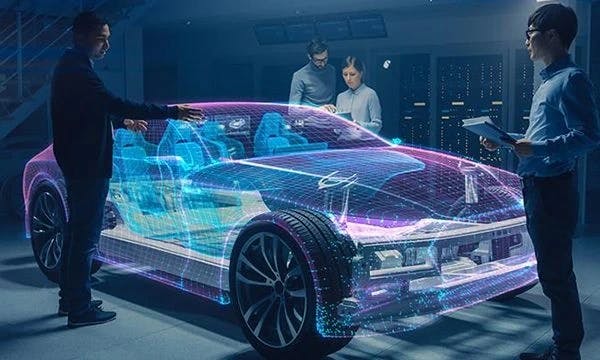Energy security has emerged as a critical concern on the global stage, with nations striving to balance their energy needs with sustainability, affordability and reliability. Sparked by Russia’s invasion of Ukraine, the global energy crisis is having far-reaching implications such as price volatility, supply shortages, security issues and economic uncertainty in what the International Energy Agency (IEA) is calling “a global tragedy.”
As the energy demand intensifies, the energy and utility sector is on a countdown to reinvention due to irreversible change in their business and operational ecosystem. Concurrently, the rapidly maturing state of emerging technology is also driving sector convergence and transforming business and operating models across three key areas: connectivity, automation and cognitive computing.
Forging ahead with technology
Infrastructure upgrades, grid stability, dependence on fossil fuels, regulatory hurdles and public perception are some of the challenges that electric utilities must overcome to transition to more sustainable energy sources, according to an on ESG and sustainability.
Beyond the horizon, new solutions such as Virtual Power Plants (VPPs) emerge as a disruptive force, fusing decentralization and optimization into a seamless energy tapestry. By interweaving distributed energy resources – such as solar panels and battery storage – into a coherent network, VPPs work in real-time, bolstering grid stability and mitigating potential disruptions.
Blockchain also emerges as a formidable ally in the energy security crusade. Its immutable ledger mechanism facilitates transparent and secure energy trading, casting a spotlight on a democratized energy distribution ecosystem. This revolutionary approach empowers individuals, organizations and communities, heralding an era where energy security is a collective endeavor.
Innovative frameworks such as HCLTech’s UVISION are driving transformative change and securing a more sustainable future for energy and utility organizations, empowering them to seamlessly adapt to the dynamic market landscape by leveraging next-generation technology solutions.
Through UVision for Engineering, HCLTech implemented a digital twin solution for a Danish manufacturer of wind turbines – to reduce wind turbine drivetrain or gearbox failures, as the failure rate of bearings and components of the drivetrains in the field was more than anticipated, which resulted in increasing downtime and high costs.
Fostering green data centers
According to the Federal Statistical Office of Germany, there are now approximately 7.2 million data centers in the world. The US has by far the most at 2,701. Germany is next with 487, followed by the UK with 456 and finally China, with a recorded 443.
According to a Digital Energy Efficiency study by the Natural Resources Defense Council, Current data centers are estimated to consume 3% of the world’s total electricity. This staggering statistic underscores the tangible need for green data centers.
Powered by renewable energy sources like solar and wind, green data centers are orchestrating a symphony of energy conservation, markedly reducing their environmental impact. This July with heat waves soaring in Europe, data centers used by Google and Oracle buckled, knocking some of their websites offline. Both companies cited problems with the “cooling system” for causing outages. Data center cooling equipment and automation are required to keep the facility at an ideal temperature and to prevent critical IT equipment from overheating. This makes data centers mission-critical facilities, as well as high-energy consumers.
The implementation of artificial intelligence can be a key factor in predicting when network traffic will spike and reduce. Technology advances such as GaN-based components can help improve power and energy efficiency in data centers by helping increase switching frequency to improve system architecture, make the power supply more efficient and lower cooling requirements.
Recently, HCLTech announced its collaboration with Schneider Electric, a leader in digital transformation of energy management and industrial automation, to develop carbon-efficient solutions for data centers in the Asia Pacific (APAC) region.
“With the growth of the digital economy, it is important that enterprises responsibly manage their data center energy consumption,” said Tan Boon Hien, Senior Vice President and Head of APAC Sustainability, HCLTech.
“Assessing risk and responsibility, we will integrate HCLTech’s best practices in information technology (IT) with Schneider Electric’s operational technology (OT) to develop solutions that significantly help improve efficiency, productivity and modernization of data centers, reducing the overall carbon footprint,” he added.
The shifting landscape of energy security
The increasing interdependence of economies and societies has elevated energy security to a global imperative. The energy and utility industry has faced organized cyber-attacks such as SolarWinds and the Colonial Pipeline, which crippled the energy supply to millions of citizens for a few days, cost millions to contain and recover and caused long-term brand damage. These alarming attacks underscore the vulnerability of energy systems to malicious attacks and emphasize the global nature of the challenge.
Whether it’s the United States fortifying its energy infrastructure against cyber threats, the European Union enhancing cross-border energy trade or India harnessing solar power to meet the burgeoning demands of the country, nations worldwide are recalibrating their strategies to navigate the evolving energy landscape.
Advancements in smart grids, energy storage and digitalization are enhancing grid resilience and enabling efficient utilization of renewable resources. Decentralized energy systems, microgrids and demand-response technologies are empowering consumers and reducing vulnerabilities.
In the critical area of energy security, technology is not just a tool; it's a beacon, guiding the world toward a future that is secure, sustainable and interconnected.





